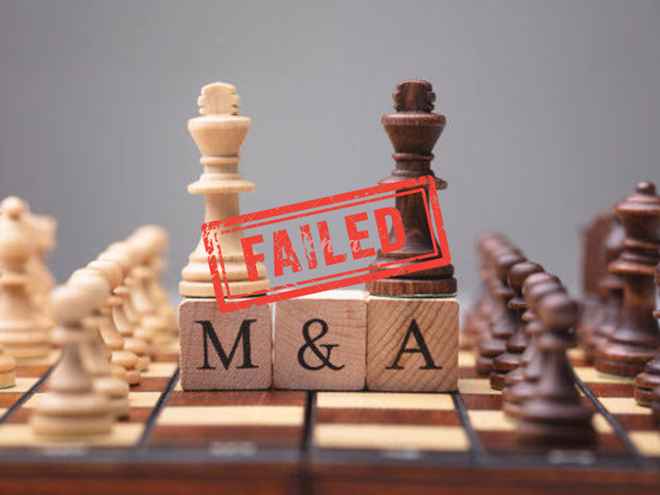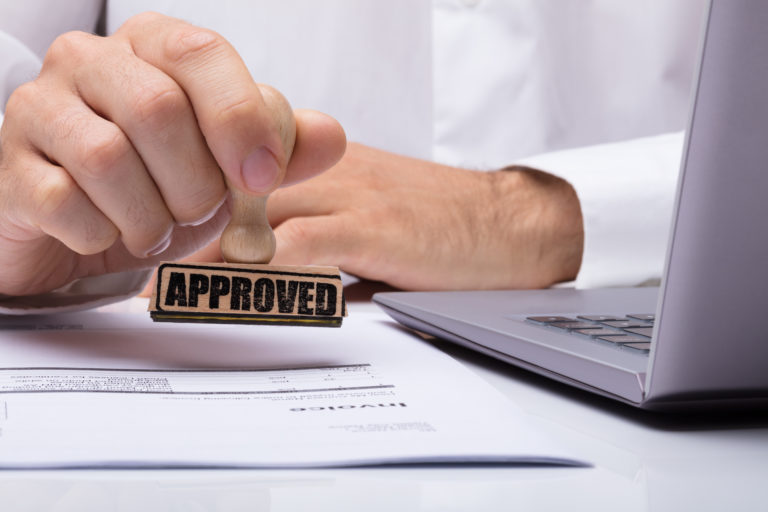Understanding the M&A Approval Process from A to Z
Explore the M&A approval process—from definitions and implementation steps to its impact on businesses and the market. Gain insight into key challenges and the roles of stakeholders in merger and acquisition transactions.

In an increasingly integrated global economy, mergers and acquisitions (M&A) have become an indispensable part of many companies’ growth strategies. However, for an M&A deal to be successfully executed, it must undergo a complex and rigorous process known as M&A approval. This process ensures that the transaction complies with legal regulations and protects the interests of stakeholders—from regulators to company shareholders. This article delves into the concept of M&A approval, covering the steps involved, potential challenges, and its effects on businesses and the broader market.
1. What Is M&A Approval?
M&A approval is an essential legal process in any merger or acquisition. It involves review and authorization by competent regulatory authorities as well as approval from the shareholders of the companies involved. The main objective is to ensure that the transaction complies with all applicable laws and meets standards of fair competition, preventing monopolistic advantages and safeguarding the rights of consumers and shareholders.

Regulatory FrameworkEach country has its own regulatory system governing M&A transactions. For example, in the United States, the Federal Trade Commission (FTC) and the Department of Justice (DOJ) oversee and approve transactions to ensure they do not violate antitrust laws. In Europe, the European Commission plays a similar role through competition regulations. These rules not only keep markets functioning efficiently but also protect companies and consumers from unfair competitive practices.
Why M&A Approval Is Necessary
- Preventing monopolies: Mergers or acquisitions can lead to market dominance by a few firms, harming competition and limiting consumer choice.
- Ensuring fair competition: Approval helps prevent deals that could restrict competition or establish an unfairly dominant market position.
- Protecting shareholder rights: Ensures that shareholders of the merged or acquired companies are protected and not disadvantaged by the transaction.
Understanding M&A approval and the governing legal framework is fundamental—not only for investors and businesses, but for anyone interested in how large companies merge or acquire one another. In the next section, we will explore the M&A approval process in detail, from initiation to closing.
2. The M&A Approval Process
The approval process is a series of steps designed to ensure every M&A transaction complies with the law and aligns with stakeholder interests. Common steps include:
Step 1: Initial proposal and internal approval
The process begins with planning and an initial proposal from the acquiring or merging company. This proposal must be approved by internal leadership before moving forward.
Step 2: Due Diligence
The buyer conducts a thorough assessment of the target’s financial, legal, and commercial position. The goal is to identify potential risks and verify the accuracy of disclosed information.
Step 3: Negotiation and drafting of terms
After due diligence, the parties negotiate and agree on deal terms, including drafting contracts, pricing, and other adjustment provisions.
Step 4: Regulatory review
Many M&A agreements require approval from regulators to ensure the deal does not violate competition and antitrust rules. In the U.S., for instance, the FTC and DOJ review large transactions to assess market impact.
Step 5: Shareholder approval
Finally, shareholders of the companies involved must approve the deal, typically via a shareholder meeting and vote on the transaction terms.
Timeline for approval
The duration varies widely depending on deal complexity, company size, and local laws. Typically, the process can take from several months up to a year.
Cross-country differences
Each country has distinct legal frameworks and processes, affecting both approach and timeline. Understanding the laws and market of the jurisdiction where the deal occurs is crucial.
The M&A approval process demands deep knowledge of both law and business. The next section outlines the key participants and their roles in shaping deal outcomes.

3. Stakeholders in the M&A Approval Process
M&A approval is not merely a sequence of legal steps; it is a complex interaction among multiple stakeholders, each playing a critical role in forming and executing the agreement:
3.1. Participating companies (Buyer and Seller)
- Buyer: The company or organization seeking to merge with or acquire another. The buyer leads the evaluation of deal potential and initiates proposals.
- Seller: The company being considered for merger or acquisition. The seller must provide complete and accurate business and financial information to enable smooth due diligence.
3.2. Regulatory authorities
These bodies ensure all M&A deals comply with applicable laws, especially antitrust and competition rules. Examples include:
- United States: Federal Trade Commission (FTC) and Department of Justice (DOJ)
- European Union: European CommissionThey examine transactions to assess market impact and prevent unlawful market dominance.
3.3. Shareholders
Shareholders of both buyer and seller play a pivotal role in approving the final agreement. They vote to accept or reject the deal terms based on the information provided, ensuring shareholder interests are protected.
3.4. Legal and financial advisors
Law firms and financial advisors are indispensable, helping companies interpret regulations, prepare necessary documentation, and negotiate terms. They ensure every facet of the transaction is thoroughly considered—from valuation to legal drafting.
Together, these parties form a framework that keeps the M&A approval process transparent and fair while protecting the interests of all stakeholders. Next, we examine how the approval process affects companies and the wider market—both positively and potentially negatively.

4. Challenges in the M&A Approval Process
The approval process is rife with challenges, from regulatory hurdles to stakeholder resistance. Key challenges include:
4.1. Regulatory barriers
Meeting complex regulatory requirements is one of the biggest hurdles. Deals—especially in heavily regulated sectors like finance, healthcare, and energy—often require multiple approvals. For example, AT&T’s proposed acquisition of Time Warner (2016) faced strong opposition from the U.S. DOJ, resulting in lengthy antitrust litigation.
4.2. Shareholder resistance
Major shareholders may oppose a deal if they believe it is not in their best interests. A notable case: Microsoft’s 2008 bid for Yahoo!, which faced public opposition from major shareholder Carl Icahn, contributing to the deal’s collapse after prolonged uncertainty.
4.3. Cross-border complexity
Cross-border deals add layers of complexity due to differing legal regimes and business cultures. For instance, Nokia’s 2016 acquisition of Alcatel required approvals from authorities in Europe, the U.S., and China. Divergent antitrust laws and foreign investment rules created significant negotiation and approval challenges.
4.4. Coordination among regulators
In cross-border transactions, aligning multiple regulators can be difficult. Each jurisdiction has distinct legal systems and priorities, causing delays or disagreements. For example, Royal Dutch Shell’s acquisition of BG Group required approvals from the EU, Brazil, and China, extending the closing timeline.
These challenges demand that companies and their counsel possess deep legal and market knowledge, along with strong negotiation and coordination capabilities. Successfully managing approval challenges helps ensure legal compliance, protects stakeholder interests, and contributes to deal success.

5. Impact of the M&A Approval Process on Businesses and the Market
5.1. Positive impacts
- Growth and market expansion: Successful M&A often enables rapid scaling, access to new markets, and acquisition of new resources. For example, a technology company might acquire a startup to integrate new technology, broaden product lines, and strengthen market position.
- Economic efficiency and cost optimization: Consolidation can yield economies of scale, reducing costs by eliminating redundancies in production and distribution, thereby improving productivity and profitability.
- Enhanced competitiveness: Combined entities can leverage shared competitive advantages—business know-how, technology, or customer bases—to compete more effectively.
5.2. Potential negative impacts
- Reduced competition and monopolistic behavior: A major risk is market concentration, particularly when large firms absorb smaller rivals. This can lead to monopolistic practices, harming consumers through higher prices or lower quality.
- Workforce reductions: Overlapping roles frequently lead to layoffs post-merger, affecting employees’ livelihoods.
- Corporate culture risk: Cultural differences between companies can cause conflict and integration difficulties, undermining operational effectiveness. Cultural misalignment is often cited as a cause of M&A failure.
These impacts show that while M&A can offer significant benefits, it also carries risks and challenges that must be carefully considered. The approval process plays a critical role in ensuring transactions are both legally compliant and aligned with the long-term interests of companies and markets.

6. Conclusion and Significance of the M&A Approval Process
The M&A approval process is not only crucial for companies involved in mergers or acquisitions but also serves as an essential safeguard for the market and society at large. This article has explored the key aspects of the process—from steps and stakeholders to its positive and negative impacts. In summary:
- M&A approval is mandatory: Every M&A transaction must undergo a strict approval process to ensure legal compliance and prevent harm to market competition.
- Protecting diverse interests: Approval protects the interests of shareholders, employees, and consumers while maintaining a fair and competitive business environment.
- Optimization and challenges: While M&A can deliver growth, market expansion, and resource optimization, it also poses challenges such as reduced competition, job cuts, and financial risks.
Ultimately, understanding the M&A approval process and effectively managing transactions is not only the responsibility of corporate leaders but also an obligation for regulators and society. Doing so helps ensure deal success and contributes to sustainable economic development. Business leaders must equip themselves for legal and financial challenges to maximize the opportunities that M&A brings. Therefore, M&A approval is not merely a legal formality—it is an indispensable step in modern business strategy.